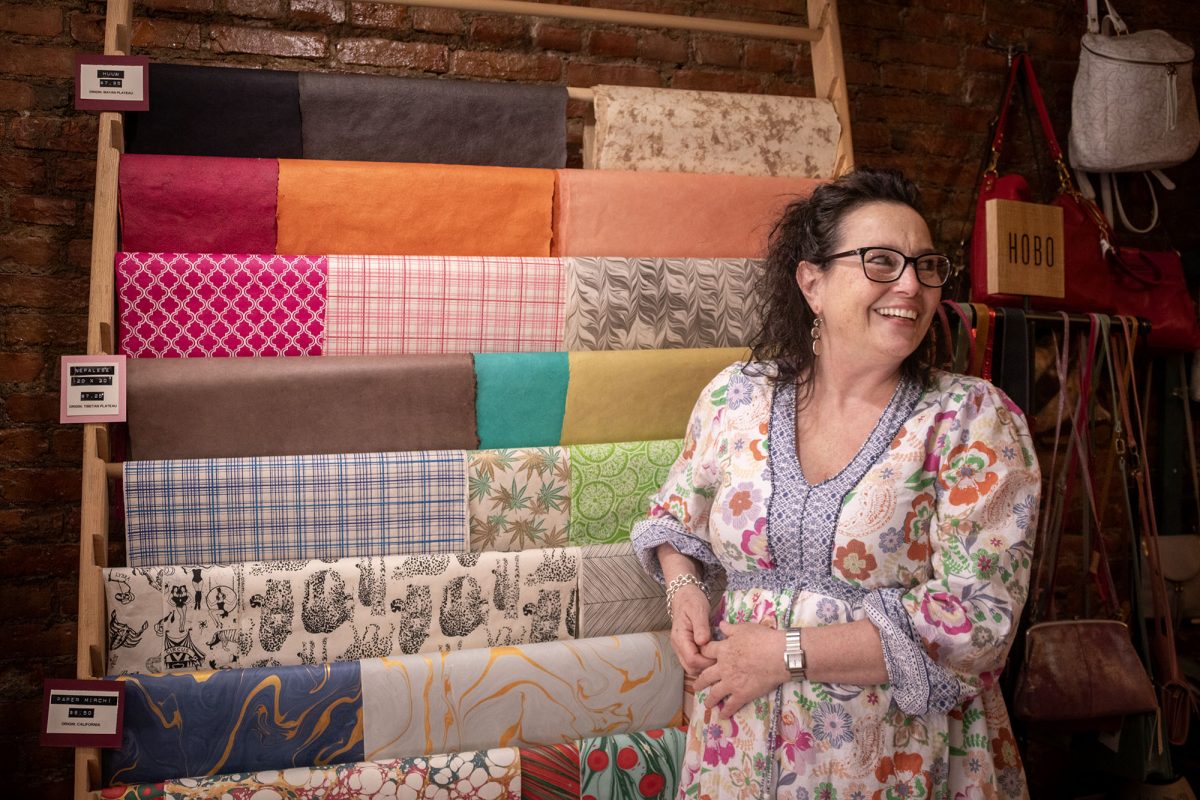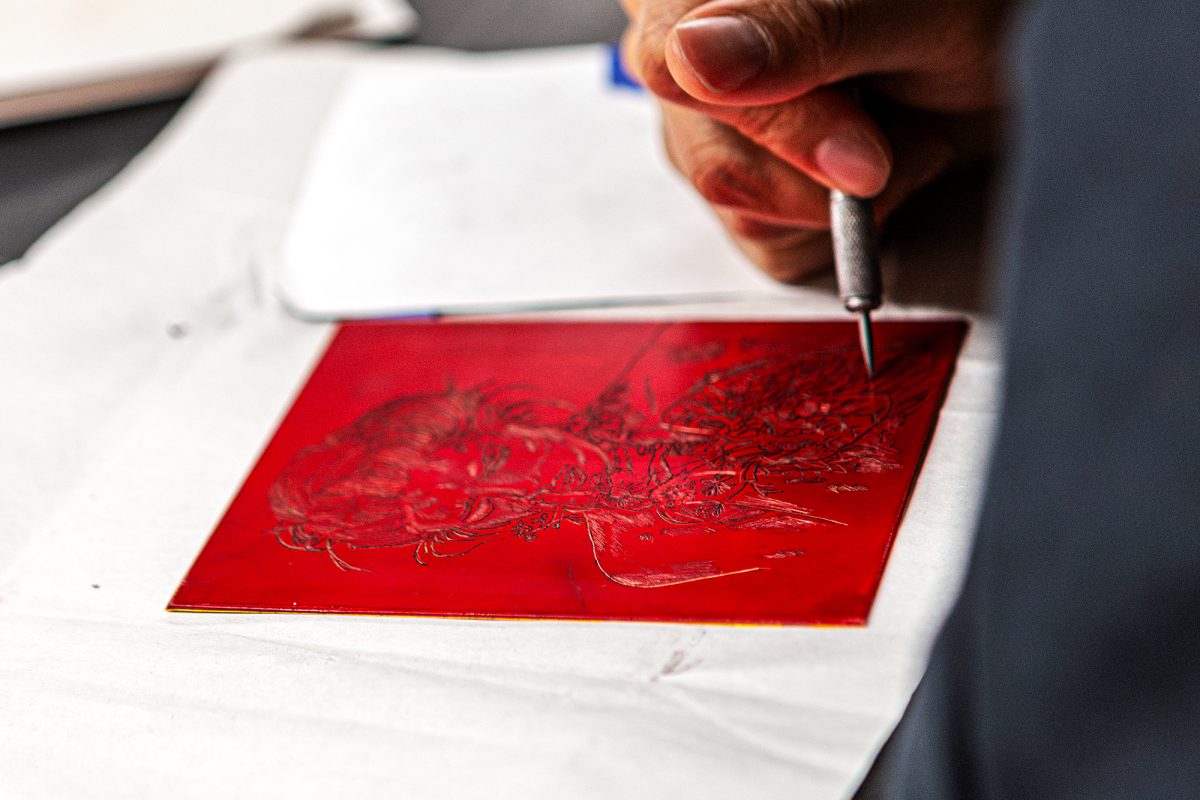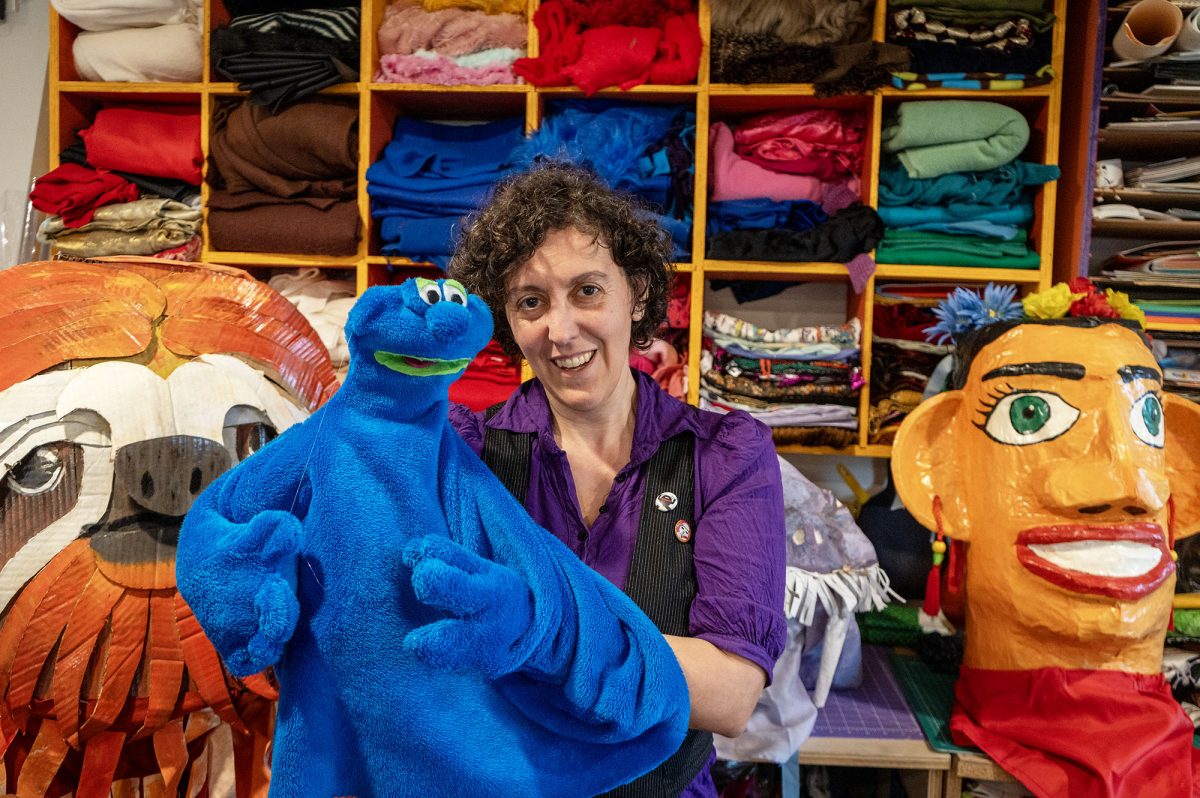Handwritten letters, stationery and books are used to communicate thoughts, ideas and information with others. While they may seem to belong in a desk drawer or a library, these mediums are deeply personal and artistic to those who keep the practice alive in an age of digital media.
Situated at the heart of The Commons, Mockingbird Paperie draws customers in with intricate window displays, including a collection of vintage typewriters, each containing a poem related to the time of year. Poems centered around the return of spring lined the March display.
Customers walk in to find a colorful paper sanctuary lined with Japanese and Italian stationery, sticker books, greeting cards for any occasion and ladders decked with decorative paper.
Suzanne Loesch has been the owner of Mockingbird Paperie for the past 15 years since she bought it from the previous owner whom she had befriended.
“Truthfully, it was just sort of like, it kind of fell in my lap, but it was kind of a good thing that it did because for a long time I had been writing letters,” Loesch said.
Loesch and her husband, Timothy Horner, were living far away from each other for a period of time. On the store’s website, Loesch writes about how her and her husband’s correspondence during that time “embodies a tangible and permanent remembrance of our truest feelings about each other.” Loesch’s collection of letters between her and Horner are what influenced her to buy the store, previously called Ithacards. She keeps a chest of these letters in the store that she occasionally puts on display.
The inspiration behind the name Mockingbird Paperie comes from her favorite literary work as a child, “To Kill a Mockingbird.” She said the novel has played a large role in her life since she was a little girl. Her nickname growing up was Scout, the same nickname as the main character of the book. Her and Horner’s company that owns Mockingbird Paperie is called “Scoutticus,” a combination of the two protagonists’ names.
Loesch has a vast inventory of locally made products and imported products from around the world, from greeting cards featuring local photographers’ art to Nepalese paper made solely by women on the Tibetan Plateau. She said she tries to stay in the vein of paper, but the store has expanded to also sell art supplies and other gifts. In a digital age, when letters can be replaced by a quick email or text message, Loesch said physical media is still important.
“Over the last, you know, 13, 14, years, I’ve seen dips, highs and lows, of where people are really excited about some really amazing paper and fountain pens,” Loesch said. “They want to write to people and have it have their own special touch and also their own sentiment, they want to write what they feel, not what the card says.”
She said she believes her letters to her husband are a form of art. Besides being a large part of Loesch’s inspiration for promoting snail mail and handwritten works, Horner also helps out at the store when he is not working as an attorney. He recalled two memorable customer stories when he was overseeing the store, one where a woman came into the store and picked up a lavish and expensive journal.
“Paper really seems to affect people,” Horner said. “She brought it up, and she said, ‘I think this is going to change my life.’”
Horner said there was another instance where a woman brought some very expensive paper up to the counter to buy and he told her how he is afraid to handle such significant paper because nothing he could write would be worthy enough for it.
“She said she writes on the best paper she can find and then burns it, and that’s like giving it away somehow, making it worthy,” Horner said.
Loesch said people come into the store from around the world and rave about how there is nothing like the Mockingbird Paperie.
“It’s unique enough to bring people in,” Loesch said. “It’s not just something that’s solitary and fills that need that you have in yourself, but it brings people [together], like you write to somebody and they write back.”
Loesch also has paper-related hobbies of her own, including making and repurposing books. She is working on repurposing old book covers that she finds at the Friends of the Library secondhand book sale, into journals.
Patricia Hunsinger, lecturer in the Department of Art, Art History, and Architecture teaches a class on book arts. Hunsinger said her students are assigned to find a book and respond to its content by somehow repurposing it. She showed a copy of “Ramayana” where a student had cut a section of paper on the inside to create a three-dimensional scene of a deer in the woods.
Hunsinger said that book arts are simply just turning books into visual art. She said it is a form of unconventional art because it defies the traditional structure of a book. The class has experimented with folding and forms of stitching to create non-traditional books. They started out with easy folds and then moved to more complex styles of stitching from different cultures including Japanese stitching and Israeli stitching, to where they are working on making hardcover books.
Literary artists across Ithaca, like Loesch and Horner, are keeping the art form alive through education and entrepreneurship as digital media continues to dominate more and more every year.
“I think that [it’s art] because you’re using your hands and manipulating the papers with your hands,” Hunsinger said. “That’s the most important thing. … It’s handmade, it’s tangible.”









